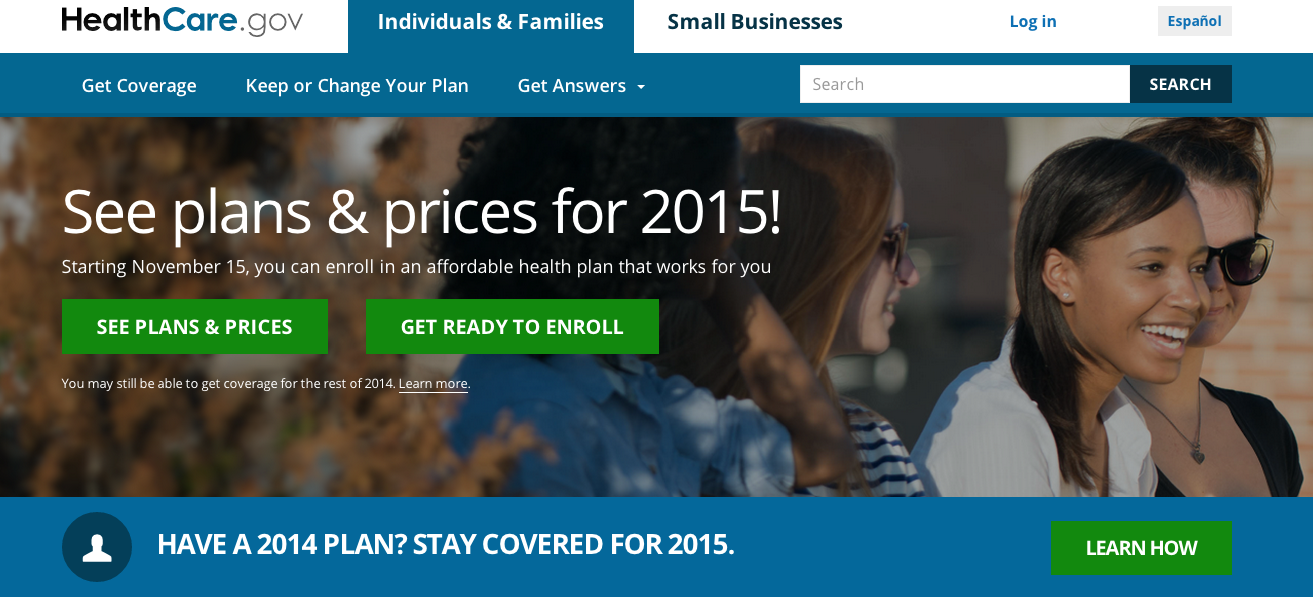
November 11, 2014
by James Wigderson
Special Guest Perspective for the MacIver Institute
It was nice to see President Barack Obama in Wisconsin a week before Election Day. I’m surprised the president didn’t take some time to visit Wisconsin’s many great golf courses. Perhaps he was not in the mood for golf after the way his Chicago Bears are playing.
Obama’s visit came as another study is out with more bad news about Obamacare, the president’s signature public policy initiative. Forbes magazine reports a new study published by the Brookings Institution shows health insurance premiums rising.
“In 2014, premiums in the non-group market grew by 24.4% compared to what they would have been without Obamacare. Of equal importance, this careful state-by-state assessment showed that premiums rose in all but 6 states (including Washington DC).”
These increases are actually above the trend for premium increases and are entirely attributable to Obamacare.
As you may have guessed, Wisconsin is not one of the six states that saw a decrease in premiums. While Wisconsin’s cost increase was more modest compared to other states (sixth lowest increase), it’s still a long way from Obama’s promise, “We’ll lower premiums by up to $2,500 for a typical family per year.”
This isn’t surprising since a Congressional Budget Office estimate said for families not getting health insurance through their employers, they can expect the average insurance premiums to go up $2,100 under Obamacare. (Including employer-provided insurance, family health care premiums were $2,581 higher in 2013 than in 2010 when Obamacare was adopted.)
This follows an earlier study, previously reported by the MacIver Institute, by American Action Forum that shows employees working for small businesses (50-99 employees) in Wisconsin lost earnings of $497.86 per employee. That’s because insurance premiums for small businesses went up 11.7%.
As we are about to enter the new enrollment period for Obamacare, conveniently after the mid-term elections, the average premium in the health care exchange in Wisconsin is expected to rise about 3%.
Wisconsin may have avoided higher rate increases due to new entrants into the exchange. Also, Wisconsin’s rates were high to begin with and insurance providers may have anticipated the higher insurance premiums better. Governor Scott Walker’s decision not to expand Medicaid may also have had an effect. Private insurance consumers spent less to subsidize the care of those Medicaid patients whose program reimbursement rates are below those of private insurance.
However, the Milwaukee Business Journal reports that the largest provider of insurance in the Wisconsin exchange, Anthem Blue Cross and Blue Shield, is expected to raise premiums by 9%, both in the exchange and outside the exchange. Anthem has at least a “25 percent share in the Wisconsin Affordable Care Act exchange individual market.”
While those on the exchange will still receive subsidies, depending on their income level, increasingly higher premiums will either result in higher taxpayer subsidies or more people being unable to afford to purchase the insurance on the exchange.
For those not in the health insurance exchange, higher premiums may force them out of the private insurance market. Again, they could end up in the exchange, with either higher subsidies or an increasing gap in affordability, or they could forgo insurance entirely.
Unfortunately, the outlook for containing rate increases is not much better. Another recent study by HealthPocket, as reported by the Washington Times, shows young men at 23 years old will see on average a 78.2% increase in health insurance premiums. Women 23 years old will see a 44.9% increase in their health insurance premiums. This is the age group needed to subsidize the insurance rates for older health insurance consumers but may find themselves priced out of the private insurance or needing increased subsidies themselves.
It only gets worse. In 2017, health insurers will no longer be able to participate in the Obamacare “re-insurance” and “risk corridor” programs. Without those subsidies to insurance carriers, rates will necessarily climb. Again, as premiums go up, consumers will either need greater taxpayer subsidies or an affordability gap will form.
Critics of Walker’s decision to not expand Medicaid complain about a possible affordability gap now, but their prescription would only make matters worse. Forcing more people onto Medicaid will only add to costs for private insurers who will end up subsidizing Medicaid’s lower medical care reimbursement rates.
But even on the current trajectory, Obamacare is becoming increasingly unaffordable either for the taxpayers to subsidize or for the insurance premium purchasers. The latter holds true even for those outside of the Obamacare exchanges. That wasn’t supposed to happen under the misnamed Affordable Care Act.